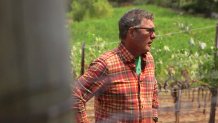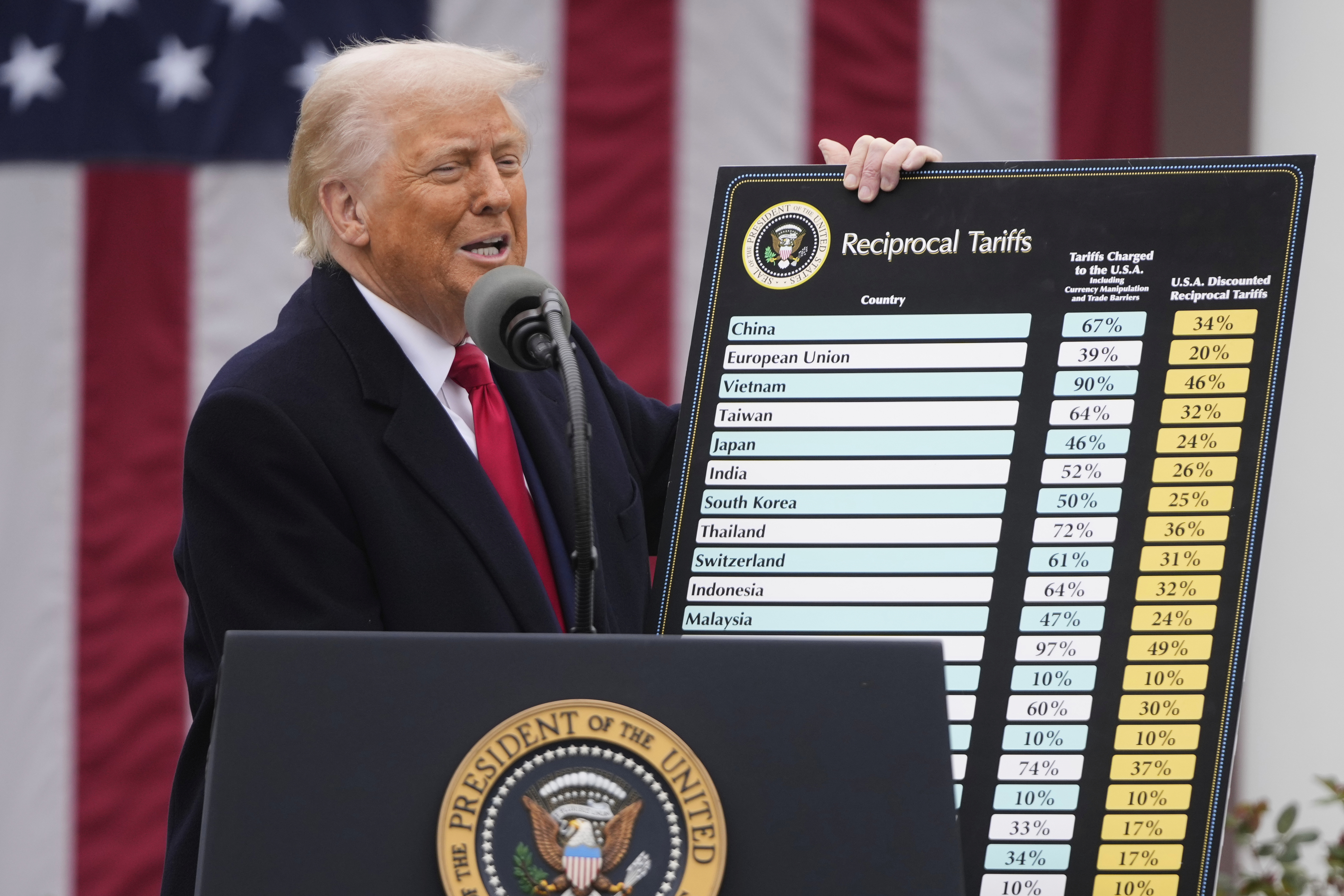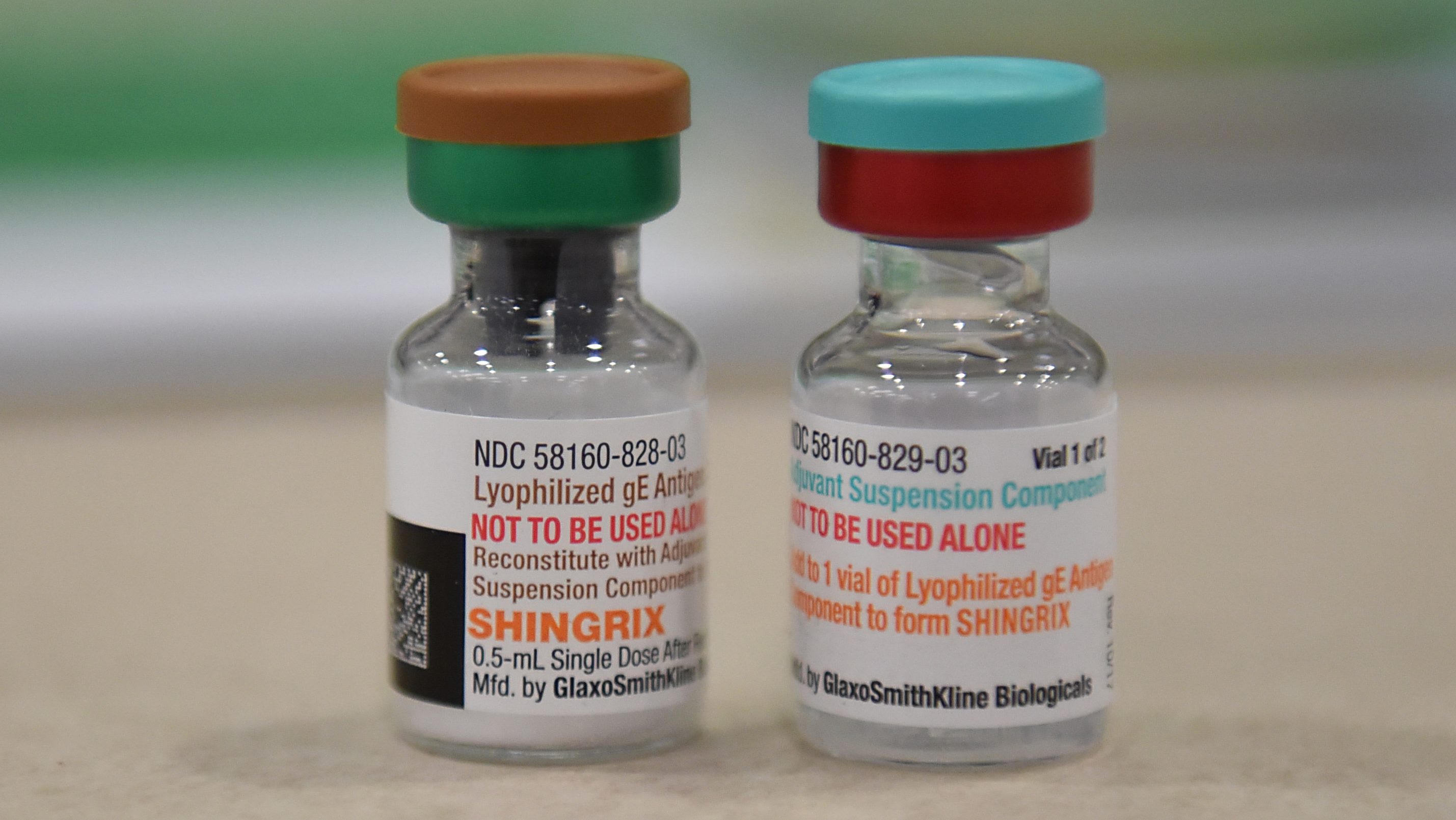As winemakers in California's famous wine region grapple with the many challenges imposed by the changing climate, at least one winery is turning to an unusual strategy for dealing with rising temperatures: sunscreen.
Not for the winemakers. For their grapes.
Ray Hannigan of Green and Red Vineyards in St. Helena said earlier this summer the winery began spraying a natural clay solution onto the leaves of the vineyard's prized zinfandel grapes.
"It’s just like a sunscreen on a human," Hannigan said surrounded by vines laden with swollen purple grapes, beneath leaves smattered with the chalky white substance.
The spray is aimed at protecting the leaves, which in turn protect the vulnerable fruit. Hannigan said the winery began employing the “sunscreen” back in June as temperatures in the Napa Valley uncharacteristically soared above the 100 degree Fahrenheit mark.
The spray, made up of kaolin clay, is applied along the fruit line of the vines, giving the canopy and grapes an extra layer of protection. Experiments in Australia have demonstrated how the product can reduce the temperature of the berries. The fear is that if the leaves dry out and wither, the clusters of grapes will follow.
"So all these leaves right here," said winemaker Aaron Whitlatch handling a leave covered in the dried white sollution, "we’re trying to protect these from the sun."
U.S. & World
Whitlatch said he was surprised to see how much attention the idea of using "sunscreen" on grapes has stirred up, even landing the winery in a New York Times story on its unusual practice.
"This sunscreen thing has really taken on a life of its own," Whitlatch laughed. "A lot of people are curious what we’re using."
Feeling out of the loop? We'll catch you up on the Chicago news you need to know. Sign up for the weekly Chicago Catch-Up newsletter.
The idea of a sunscreen method for grapes may be just one method for dealing with the increasing heat, but it speaks volumes about the challenges the region's winemakers are dealing with as climate change disrupts age-old winemaking traditions.

If anyone can punch a hole in the romantic notions about those traditions, it’s Hannigan. In the last year he's dealt with excessive heat, fires, drought and a loss of his liability insurance.
Last year, the Hennessy Fire, which started on nearby Hennessy Road, marched to the edge of the vineyard charring trees and brush but spared the vineyards. Though the vines survived, smoke taint from the fire forced Hannigan to throw out his entire red grape crop.
"We lost all our beautiful fruit," he said. "It was heartbreaking."
Compounding the loss, after the flames and smoke were gone, Green and Red’s insurance company refused to renew the winery’s fire insurance because of the increased risk.
"So all these buildings, the wineries everything you look around at," Hannigan said, gesturing to the wine-making compound, "we’re just flying blind now, we have no insurance on our tanks."
Hannigan, who worked as an attorney in his native New York before venturing into winemaking, still believes his previous life as a city lawyer was the perilous one. Now daily life in wine country seesaws between the beauty of nature, and the threat of it.
Last week, Hannigan joined his crews in the vineyard picking Zinfandel grapes, racing to get the crop harvested in time. In Napa Valley these days, the common notion among weary vintners is the region is always just between fires.
"We need to get this fruit in before any smoke comes," Hannigan said, adding a chilling prophecy. "I pretty much have no doubt that by October, fire will hit somewhere around here."
Hannigan’s wife, Tobin Heminway — whose father founded the winery and left it to her when he died — said the many difficulties, all pointing toward climate change, have made winemaking life unpredictable.
"Not knowing what’s going to happen every day," Heminway said, "I now have PTSD when it comes to the wind."
Hannigan watched as a grape crusher grabbed a bin full of newly picked Zinfandel grapes and pulverized it, the purple juice trickling into a steel tank. The work area opened up to rolling vineyards planted by Heminway's father 50 years ago, flanked at all sides by imposing foothills.
Later that night, Pacific Gas and Electric, a utility company based in San Francisco, would cut the winery's power as forecasted heavy winds raised the risk of fires. At that moment, however, the tranquil scene seemed at odds with the idea a potential disaster could swoop in at any time.
"It feels like we live on a knife edge," Hannigan said. "It’s a bit of a climate disaster area, with fire, heat, drought. It just never seems to end."



